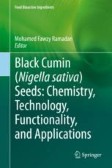Search
Search Results
-
Unraveling the terpene synthase family and characterization of BsTPS2 contributing to (S)-( +)-linalool biosynthesis in Boswellia
Boswellia tree bark exudes oleo-gum resin in response to wounding, which is rich in terpene volatiles. But, the molecular and biochemical basis of...

-
The involvement of AtMKK1 and AtMKK3 in plant-deleterious microbial volatile compounds-induced defense responses
Key messagePlant-deleterious microbial volatiles activate the transactivation of hypoxia, MAMPs and wound responsive genes in Arabidopsis thaliana ....

-
Feeding Assay to Study the Effect of Phytocytokines on Direct and Indirect Defense in Maize
Phytocytokines mediate defense against pests and pathogens. Many methods have been developed to study the physiological responses triggered by...
-
Plant exposure to herbivore-induced plant volatiles: a sustainable approach through eliciting plant defenses
Modern agricultural policies across the globe are committed to a significant reduction in chemical pesticide dependency; however, pest management...

-
Caterpillar Salivary Glucose Oxidase Decreases Green Leaf Volatile Emission and Increases Terpene Emission from Maize
Caterpillar salivary glucose oxidase (GOX) can function as both an elicitor or as an effector of plant defense responses depending upon the system....

-
Experimental Growth Conditions affect Direct and Indirect Defences in two Cotton Species
Cotton has been used as a model plant to study direct and indirect plant defence against herbivorous insects. However, the plant growing conditions...

-
Bacterial Volatiles as Players in Tripartite Interactions
Microorganisms are powerful but often humble players in the network of intra- and interspecific interactions in ecosystems. Especially bacteria play...
-
Volatile interactions between specific undamaged barley cultivars affect aphid feeding behavior and performance
Recent studies have demonstrated that cultivar mixtures can reduce aphid plant acceptance and population development. It is still unknown as to which...

-
Terpenoids and Their Possible Role in Defense Against a Fungal Pathogen Alternaria tenuissima in Chrysanthemum morifolium Cultivars
Terpenoids are a class of structurally diverse natural products involved in various plant biological processes. Their primary function is believed to...

-
Diminished fitness of red cotton bug Dysdercus koenigii Fabricius induced by the volatiles in the hexane extract of Catharanthus roseus
Survival, longevity, growth index and development of fifth instar nymphs of Dysdercus koenigii (Heteroptera: Pyrrhocoriedae) as influenced by the Catha...

-
Terpene produced by coexpression of the TPS and P450 genes from Lavandula angustifolia protects plants from herbivore attacks during budding stages
To deter herbivore attacks, plants employ a diverse array of volatile compounds, particularly during the early developmental stages. The highly...

-
Novel Prospective of N. sativa Essential Oil Analysis, Culinary and Medicinal Uses
Nigella is a genus belonging to family Ranunculaceae. Its essential oil components have long been used in traditional medicine as well as in culinary...
-
Role of Induced Resistance in Insect-Pest Management
Induced resistance is a process by which plants increase their resistance against pathogens and herbivores through the activation of their own...
-
Transcriptome analysis of the model grass Lolium temulentum exposed to green leaf volatiles
BackgroundForage and turf grasses are routinely cut and grazed upon throughout their lifecycle. When grasses are cut or damaged, they rapidly release...

-
Chemoecological Responses of Plants
Plants, though immovable, are able to defend themselves from insect pest attack through production of low molecular weight volatile organic compounds...
-
Tropical mobola plum (Parinari Curatellifolia): a full characterization of wood and bark within the scope of biorefineries
Parinari curatellifolia is the main species used to produce charcoal in Angola. Its chemical, anatomical, and thermal properties were analyzed. The...

-
Host Plant Resistance to Insect Pests in Maize
Maize, a potential global crop is attacked by a wide array of insect pests. Among them, spotted stem borer, pink stem borer, fall armyworm, and shoot...
-
Elicitation of biomolecules as host defense arsenals during insect attacks on tea plants (Camellia sinensis (L.) Kuntze)
The most consumed and economically important beverage plant, tea ( Camellia sinensis ), and its pests have coevolved so as to maintain the plant–insect...

-
Regulation of wound ethylene biosynthesis by NAC transcription factors in kiwifruit
BackgroundThe phytohormone ethylene controls many processes in plant development and acts as a key signaling molecule in response to biotic and...

-
Microbial volatile organic compounds in intra-kingdom and inter-kingdom interactions
Microorganisms produce and excrete a versatile array of metabolites with different physico-chemical properties and biological activities. However,...

